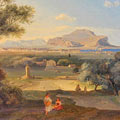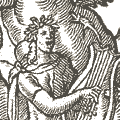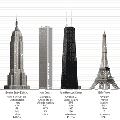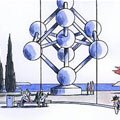The Mid-Century Modernist van grafisch ontwerper Stephen Coles
If good design is a balance of aesthetics and utility, the craft peaked in the years between 1945–1970. This era of modernism hit the design sweet spot: functional beauty. Finding harmony between the natural and the manmade, designers like
Bertoia, Braakman, Deam, Eames, Ekselius, Heywood-Wakefield, Pierre Guariche, Jacobsen, Juhl, Kagen, Kjaerholm, Knoll, Loewy, McCobb, Noguchi, Nelson, Paulin, Prouvé, Pucci, Risom, Saarinen, Schultz, Van der Rohe, Vignelli, Vodder, Wegner, and
Wormley created objects that were not merely easy on the eyes, but appealing because they served their purpose with organic grace.
Bron:
midcenturymodernist.com
Mid-Century modern is an architectural, interior and product design form that generally describes mid-20th century developments in modern design, architecture, and urban development from roughly 1933 to 1965. The term was coined in 1983 by
Cara Greenberg for the title of her ground-breaking book,
Mid-Century Modern: Furniture of the 1950s (Random House), celebrating the style which is now recognized by scholars and museums worldwide as a significant design movement. Mid-century architecture was a further development of
Frank Lloyd Wright’s principles of organic architecture combined with many elements reflected in the International and Bauhaus movements. Mid-century modernism, however, was much more organic in form and less formal than the International Style.
Scandinavian designers and architects were very influential at this time, with a style characterized by simplicity, democratic design and natural shapes. Like many of
Wright‘s designs, Mid-Century architecture was frequently employed in residential structures with the goal of bringing modernism into America’s post-war suburbs. This style emphasized creating structures with ample windows and open floor-plans with the intention of opening up interior spaces and bringing the outdoors in. Many Mid-century houses utilized then-groundbreaking post and beam architectural design that eliminated bulky support walls in favor of walls seemingly made of glass. Function was as important as form in Mid-Century designs, with an emphasis placed specifically on targeting the needs of the average American family. Examples of residential
Mid-Century modern architecture are frequently referred to as the California Modern style.
Bron:
en.wikipedia.org













